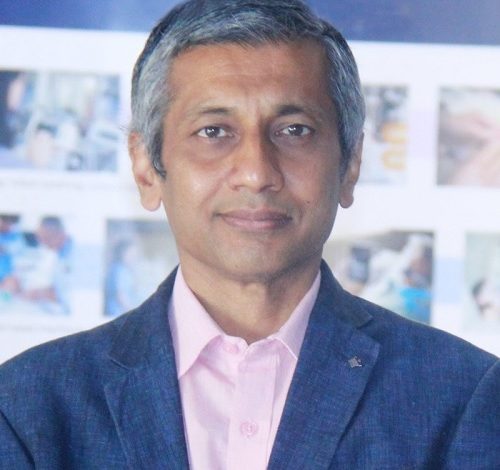Battling Coronary Artery Disease

Adarsh Holavanahalli, NBX Leader -IGT Solutions, Philips says that the race for a good cardiologist exists and will continue to exist as long as there is no parity in outcomes and lack of standardisation in care management
India is at war with Coronary Artery Disease! Sounds familiar? Even COVID could not displace CAD as the number one killer in our country. A statistic often heard is that one out of four deaths is from heart disease and when that translates roughly to around 2.25 million people, our collective being gets a shock. When we look at countries with more advanced healthcare systems, it is still the same scenario -people as young as 25 years are losing lives from Myocardial Infarctions. It is time to take this gauntlet seriously.
It is not like healthcare is doing nothing. It is on an overdrive to mitigate the situation. Let us see the solutions that are available in the current healthcare system to address CAD.
Cathlabs: CAD interventions require procedures that are either pharmacological (thrombolysis) or invasive (PCI) which are done in Cathlabs. So, are more Cathlabs the answer? There are 2200 Cathlabs in India and that number is on the rise. The problem is in driving verified patient cases into these facilities in a timely manner. Larger hospitals have their referral networks to reach out to patients while smaller and little known facilities depend on individual cardiologists.
Real-time monitoring for CAD patients via wearables: There are many holter-based solutions emerging in the market and it seems simple for the clinician to prescribe these devices to patients and ensure that a combination of digital platform escalations and personalised treatments work together. Apple hasshown us one way for Arrythmia monitoring on Apple Watch, and more such solutions will follow.
Technologies that facilitate early diagnosis: Existing tele-ECG solutions provide clinicians with waveform
acquisition capabilities, compliment with remote cardiologist readings (or even AI for that matter) and generate
referrals to the right specialist based on health conditions. Hospitals work remotely with GPs to screen people
ensuring that they are diagnosed early.
Empowering patients: Consumer grade ECG devices are available online. These devices are easy to use, a few
of them don’t even need leads and almost universally offer cloud-based integrations to close the self-diagnosis
loop.
Preventive measures: Various wellness initiatives are driving up awareness and reduce overall mortality rates. It
has been conjectured that behavioural modifications reduces risk factors contributing immensely to disease
control. Cessation of smoking, curbing unhealthy diets and performing regular exercise are all in vogue across preventive health programmes in different geographies. Hence, we ought to see some changes across general
populations given that FICCI estimates wellness to be a Rs 490 billion market this year.
But for all the effort the healthcare system has put in to solve this problem, our flanks are still vulnerable to an all out attack. Somehow, we do not seem to be in control as a society, as a system and even as an individual. We are not realising the enormity of what is facing us, and ignorance is not bliss!
Consider that we have a 300 million strong non-communicable disease populace who is either prevalent with CAD or are at direct risk due to hypertension or diabetes. How do we stop this relentless progression from
disease to an incident? People between 25-44 are dying of this disease and it has gone up in the last five years. This throws up many questions.
Is it just diet or is it the environment? What’s the effect of particulate matter on disease progressions? Have
lifestyle changes worsened the onset of this disease? We must answer these questions comprehensively with education/awareness in mind.
Spare a thought for the yawning clinical gap! A CAD prevalence rate of 14 per cent in urban areas and 11 per cent in rural areas (we need to treat the shortage of cardiologists seriously). We cannot add cardiologists fast enough to take this problem by the scruff of the neck. Impossibly enough, we need 80000 cardiologists to be able to distribute this load efficiently. Tele-health is touted as an answer and while it does alleviate convenience
and access problems, it does not solve the capacity issues very well. The race for a good cardiologist exists and
will continue to exist as long as there is no parity in outcomes and lack of standardisation in care management.
CAD requires the clinician to be able to engage with patients proactively and to scale up a clinician’s capacity online.
Population-level triaging and providing broad-based corrections are the fulcrum of any good healthcare system.
Sometimes just adjusting dietary salt levels can cause significant corrections in risk scores over a period.
Also, there needs to be a change in the thinking of people towards health. Incentives are instrumental in
encouraging large groups of people to adopt better heart health patterns of living.
If anything, this proves that we need to start looking at psychological aspects of health too. Stress is a multi-headed monster today which will not go away anytime soon. Symptoms must not be ignored, and it is unwise to think that precision diagnostic readings are the only way out. We should not underestimate clean good living which consists of good sleep, enough exercise, and a balanced diet.
India needs to wake up to the CAD problem and attack from all sides if it hopes to win this war eventually.




